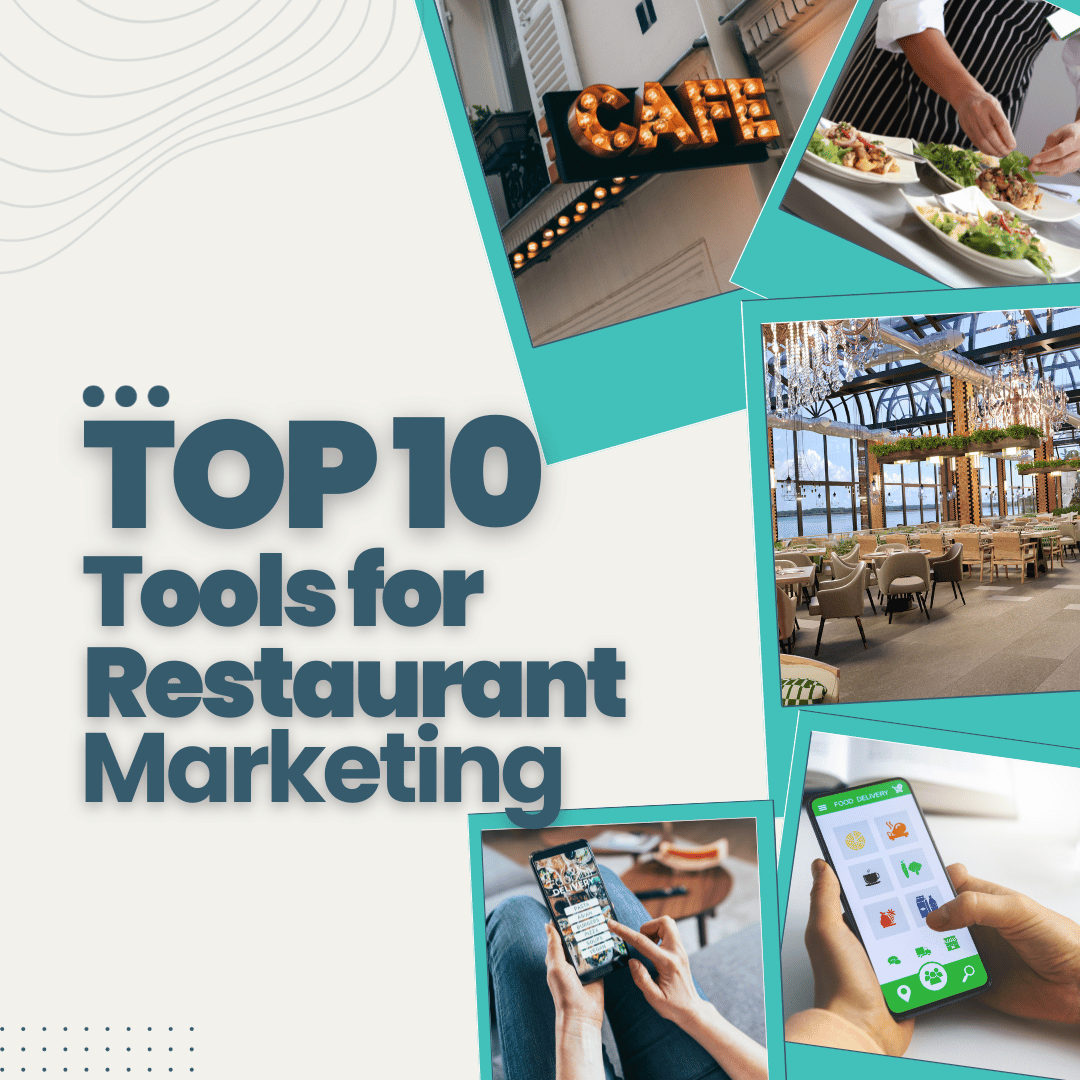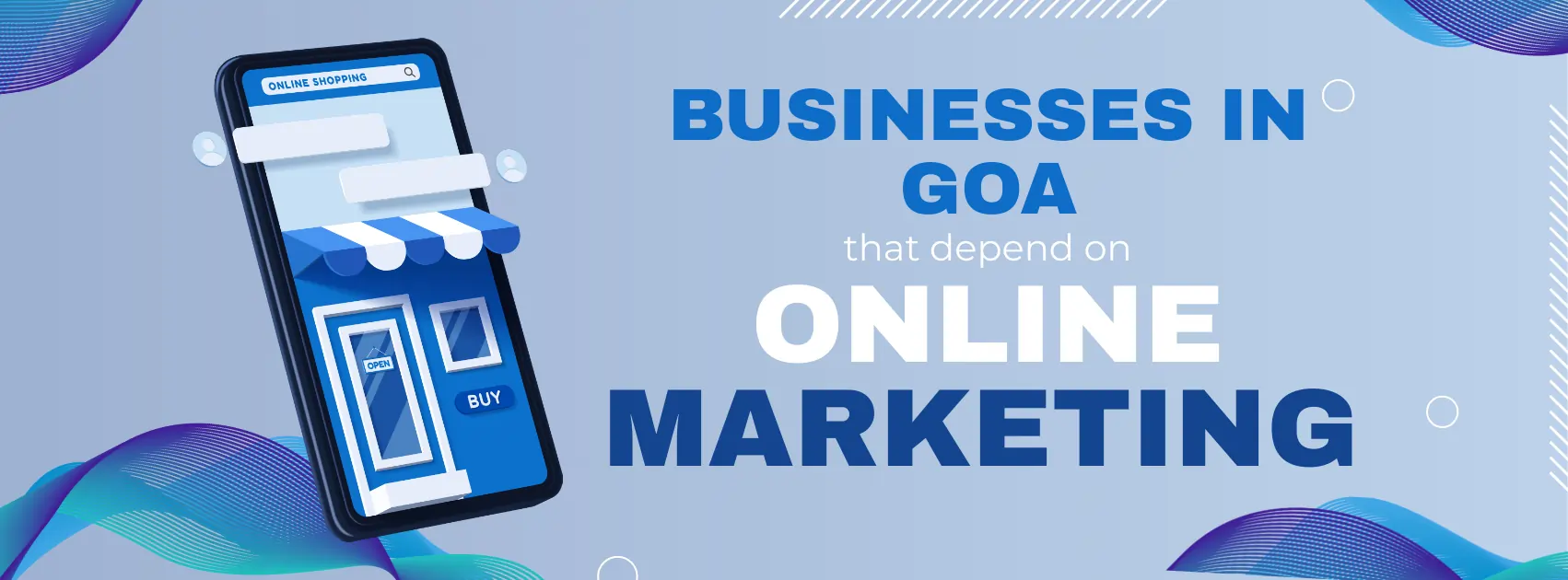Setting the Stage: The Digital Landscape for Restaurants
In today’s dynamic and ever-evolving digital landscape, the restaurant industry faces unique challenges and opportunities. As we delve into the world of restaurant marketing tools, it’s crucial to first understand the digital environment in which these tools operate and thrive.
The Digital Transformation of Restaurants
Restaurants in Goa, like those around the world, have witnessed a significant digital transformation in recent years. The proliferation of smartphones, easy access to the internet, and changing consumer behaviors have reshaped how restaurants interact with their patrons.
- Smartphone Proliferation: With smartphones becoming ubiquitous, customers now rely on their devices to discover new restaurants, browse menus, make reservations, and place orders. Restaurants that embrace mobile-friendly solutions are better poised to capture this growing market.
- Online Ordering: The rise of online food delivery platforms has redefined the way people order meals. Restaurants that integrate with these platforms can tap into a broader customer base and increase their revenue streams.
- Social Media Influence: Social media platforms have become powerful tools for restaurant marketing. Instagram-worthy food photos, viral trends, and user-generated content can propel a restaurant to fame overnight.
- Customer Reviews: Online reviews on platforms like TripAdvisor, Yelp, and Google Reviews can make or break a restaurant’s reputation. Managing online reviews and ensuring a positive online presence is now a top priority.
The Crucial Role of Marketing Tools
In this digital landscape, restaurant marketing tools emerge as indispensable assets for success. These tools empower restaurants to navigate the complexities of the digital age, connect with customers, and drive growth. Let’s briefly examine the pivotal role of these tools:
1. Amplifying Visibility
Restaurant marketing tools enhance a restaurant’s online visibility. They ensure that potential diners can find your establishment amidst the digital noise. Whether it’s through search engine optimization (SEO) techniques or social media marketing, these tools make your restaurant stand out.
2. Streamlining Operations
Efficiency is key in the restaurant industry. Marketing tools help streamline various aspects of restaurant operations. Online ordering systems, for instance, simplify the process of taking and fulfilling orders, reducing errors and improving customer satisfaction.
3. Engaging Customers
Engagement is at the heart of restaurant marketing. SMS and email marketing tools allow you to stay in touch with your customers, inform them about promotions, and build lasting relationships.
4. Managing Reputation
Online review aggregators and reputation management tools enable you to monitor and manage your restaurant’s online reputation effectively. By addressing feedback promptly and professionally, you can enhance your restaurant’s image.
5. Maximizing Marketing ROI
Promotion marketing software and social media scheduling tools help restaurants create and execute marketing campaigns that yield results. These tools enable precise targeting, ensuring that every marketing dollar is well spent.
6. Personalizing Experiences
WiFi marketing tools and customer surveys collect valuable data about your patrons. This data can be used to personalize marketing efforts, tailoring offers and experiences to individual preferences.
7. Staying Competitive
In a competitive landscape, staying ahead of the curve is paramount. Restaurant marketing tools provide insights into market trends, helping you make informed decisions and outperform competitors.
As we embark on this journey to explore the top eight must-have restaurant marketing tools in Goa, remember that these tools are not just about technology—they are about enhancing the dining experience, building lasting relationships with customers, and thriving in the digital age.
Tool 1: Online Ordering System

In the realm of restaurant marketing tools, one stands out as a cornerstone of success in the digital age: the Online Ordering System.
The Power of Online Ordering
In today’s fast-paced world, convenience is king. For restaurants in Goa looking to thrive in the digital landscape, embracing the power of online ordering is non-negotiable.
The Customer’s Perspective
From the customer’s perspective, online ordering offers a seamless and hassle-free way to satisfy their culinary cravings. With just a few taps on their smartphones or clicks on their computers, they can explore menus, place orders, and track deliveries—all from the comfort of their homes or workplaces.
The Restaurant’s Perspective
From the restaurant’s perspective, online ordering presents a multitude of advantages. Here’s why it’s indispensable:
- Expanded Reach: Online ordering transcends geographical boundaries. Restaurants can attract customers from various locations in Goa, boosting their customer base and revenue.
- Increased Efficiency: Manual order-taking can lead to errors and delays. Online ordering systems streamline the process, reducing errors and ensuring orders are accurate and delivered promptly.
- Data-Driven Insights: These systems provide valuable data on customer preferences, order trends, and peak ordering hours. Restaurants can leverage this information to tailor their offerings and marketing strategies.
Benefits of Implementing an Online Ordering System
Now, let’s delve into the specific benefits of implementing an online ordering system in your restaurant marketing toolkit:
1. Enhanced Customer Experience
Customers appreciate the convenience of ordering online. It eliminates the need for lengthy phone calls and ensures that orders are recorded accurately. Plus, real-time order tracking keeps customers informed about their order’s status.
2. Increased Revenue
Online ordering often leads to increased order frequency. Customers tend to order more when they can peruse the menu at their leisure. Additionally, the ability to offer special promotions and upsell items during the ordering process can boost sales.
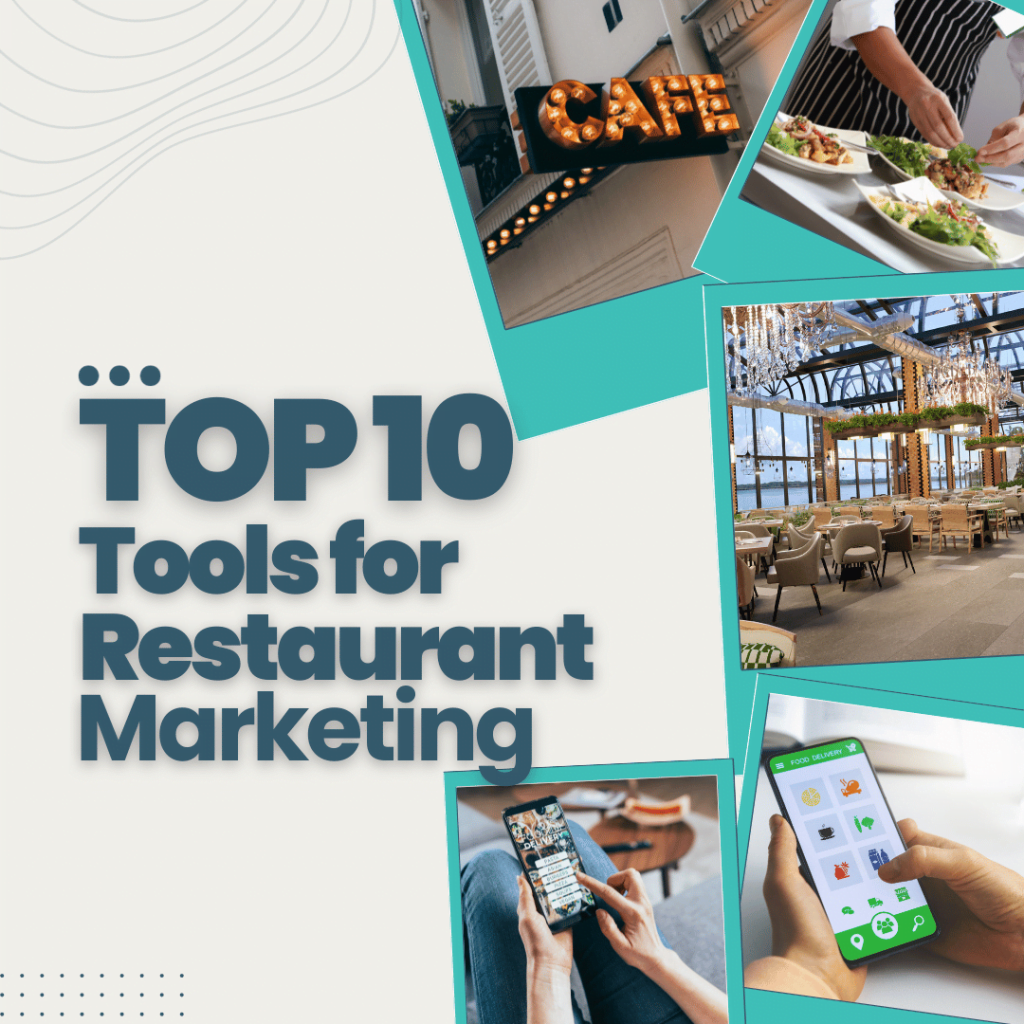
3. Efficient Order Management
Manual order management can be cumbersome and error-prone. Online ordering systems simplify order processing, reducing the risk of mistakes and allowing staff to focus on other critical tasks.
4. Cost Savings
While initial setup may require an investment, online ordering systems can lead to long-term cost savings. Fewer errors mean less wasted food, and streamlined operations can lead to reduced labor costs.
Key Features to Look for
Not all online ordering systems are created equal. When selecting a system for your restaurant in Goa, consider the following key features:
1. User-Friendly Interface
The system should be easy for both customers and staff to navigate. Intuitive menus and clear instructions enhance the ordering experience.
2. Integration Capabilities
Ensure that the system can seamlessly integrate with your existing restaurant management software, such as POS systems and inventory management tools.
3. Mobile Compatibility
Given the prevalence of mobile device usage, your online ordering system must be mobile-friendly. Responsive design ensures a smooth ordering process on smartphones and tablets.
4. Payment Options
Offer a variety of payment options to accommodate customer preferences. Credit cards, digital wallets, and cash-on-delivery should all be supported.
5. Order Customization
Allow customers to customize their orders. Whether it’s specifying dietary preferences or choosing toppings, customization options enhance the ordering experience.
Success Stories: Restaurants Nailing Online Orders
To illustrate the impact of online ordering systems, let’s take a glimpse at a few success stories from restaurants in Goa:
Example 1: Spice Fusion
Spice Fusion, a popular Goan restaurant, saw a 30% increase in monthly revenue after implementing an online ordering system. Customers praised the ease of use and the ability to customize their orders.
Example 2: Coastal Bites
Coastal Bites, known for its seafood delicacies, expanded its reach beyond its physical location by partnering with multiple food delivery platforms. This move led to a 50% increase in orders and a substantial revenue boost.
Tool 2: Online Table Reservation System
In the ever-evolving landscape of restaurant marketing tools, one tool stands out for its ability to enhance customer experience and streamline restaurant operations: the Online Table Reservation System.
Simplifying Reservations with Technology
The Reservation Conundrum
Booking a table at a restaurant was once a cumbersome task, often involving long waits on hold or in-person visits. However, the advent of technology has transformed this process, making it more convenient for both patrons and restaurant owners.
The Digital Reservation Solution
An Online Table Reservation System offers a streamlined solution to the reservation conundrum. It enables customers to book tables at their preferred restaurants with just a few clicks on their smartphones or computers, revolutionizing the dining experience.
Why Every Restaurant Needs a Reservation System
Managing the Influx
In the bustling culinary scene of Goa, restaurants can experience a significant influx of diners, especially during peak hours or tourist seasons. Without an efficient reservation system in place, chaos can ensue, leading to frustrated customers and overwhelmed staff.
Ensuring Customer Satisfaction
A restaurant’s success hinges on its ability to provide a memorable dining experience. Online reservation systems contribute to this by:
- Reducing Waiting Times: Customers can book tables in advance, eliminating the need for lengthy waits.
- Enhancing Efficiency: Restaurant staff can better manage reservations, optimizing table turnover.
- Personalized Service: The system can store customer preferences, enabling staff to offer personalized experiences.
Choosing the Right Reservation System
Not all online reservation systems are created equal. Here are key factors to consider when selecting the right system for your restaurant in Goa:
1. User-Friendly Interface
Ensure the system has an intuitive interface that makes it easy for customers to book tables. Clear instructions and an attractive design enhance the user experience.
2. Integration Capabilities
Select a system that can seamlessly integrate with your restaurant’s other tools, such as POS systems, to ensure a cohesive operation.
3. Customization Options
Look for a system that allows you to customize booking options, such as specifying seating preferences and accommodating special requests.
4. Mobile Accessibility
Given the prevalence of mobile device usage, it’s crucial that the reservation system is accessible and responsive on smartphones and tablets.
5. Reservation Management
The system should offer robust reservation management features, including the ability to set reservation limits during peak hours and automated waitlist management.
Success Stories: Restaurants Streamlining Reservations
Let’s explore a couple of success stories from restaurants in Goa that have leveraged online reservation systems to streamline their operations:
Example 1: Spice Haven
Spice Haven, a popular Goan eatery, implemented an online reservation system and witnessed a 25% increase in table turnover during peak hours. Customers praised the convenience of booking via the restaurant’s website.
Example 2: Oceanfront Bistro
Oceanfront Bistro, known for its scenic seaside dining, saw a surge in reservations after partnering with online reservation platforms. The system’s automated waitlist management ensured that no table remained vacant during busy evenings.
In conclusion, the Online Table Reservation System is a vital component of restaurant marketing tools, especially in a dynamic dining destination like Goa. Its ability to simplify reservations, enhance customer satisfaction, and optimize restaurant operations makes it indispensable for restaurants aiming to provide top-notch dining experiences. So, if you’re looking to stay ahead in the competitive restaurant scene, consider integrating this powerful tool into your marketing strategy.
Tool 3: SMS and Email Marketing Tool
In the realm of restaurant marketing, one tool that has proven its effectiveness time and again is the SMS and Email Marketing Tool. Harnessing the power of direct communication with customers, this tool plays a crucial role in building lasting relationships and boosting business growth.
Leveraging SMS and Email Marketing
The Digital Communication Revolution
The advent of digital communication channels has redefined how restaurants connect with their customers. SMS and email marketing stand out as cost-effective and direct methods to engage diners.
Building Customer Relationships through SMS
SMS marketing allows restaurants to establish a direct line of communication with their patrons. Here’s how it fosters relationships:
- Personalized Offers: Send personalized offers and discounts to customers based on their dining preferences.
- Reservation Reminders: Send reservation reminders to ensure diners don’t miss their bookings.
- Feedback Solicitation: Request feedback after dining experiences to show you value their opinions.
Crafting Effective Email Campaigns
Email marketing, on the other hand, provides a platform for more in-depth communication. Consider these strategies:
1. Segmented Campaigns
Segment your email list based on customer behavior, such as frequency of visits or preferred menu items. Tailor campaigns to each segment’s interests.
2. Compelling Content
Craft engaging emails with mouthwatering visuals of your dishes, special promotions, and chef’s recommendations.
3. Automated Follow-Ups
Automate follow-up emails after a customer’s visit, expressing gratitude and encouraging them to return.
4. Loyalty Programs
Promote your restaurant’s loyalty programs via email, enticing customers to join for exclusive offers.
Success Stories: Restaurants Mastering SMS and Email
Let’s delve into a couple of success stories from Goa’s restaurant scene, where SMS and email marketing have played pivotal roles.
Example 1: Spice Haven’s SMS Success
Spice Haven, a Goan restaurant renowned for its spices, implemented SMS marketing to inform customers about weekly specials. The result? A 20% increase in mid-week bookings and a loyal customer base eager to explore new flavors.
Example 2: Oceanfront Bistro’s Email Excellence
Oceanfront Bistro, situated by the sea, capitalized on email marketing by sending picturesque newsletters showcasing its seaside ambience and fresh catch of the day. This strategy not only attracted tourists but also boosted local patronage.
Tool 4: Promotion Marketing Software
In the fast-paced world of restaurant marketing, staying ahead of the competition often boils down to your ability to promote your establishment effectively. This is where Promotion Marketing Software comes into play, enabling restaurants in Goa to boost sales, engage customers, and drive success.
Boosting Sales with Promotion Marketing
Promotion Marketing Software is a versatile tool that allows restaurants to create, manage, and analyze promotional campaigns with precision. Here’s how it contributes to boosting sales:
1. Targeted Offers
Crafting targeted offers that resonate with your audience is essential. Promotion Marketing Software helps you identify customer preferences, enabling you to tailor promotions to specific groups.
2. Multi-Channel Promotion
Promote your restaurant across various channels, from social media platforms to email campaigns. Consistency in your promotions ensures a wider reach.
3. Real-time Analytics
Stay informed about the performance of your promotions in real-time. Monitor the success of campaigns, track customer engagement, and adjust your strategies on the fly.
4. Automated Campaigns
Simplify the process of running promotions by automating tasks like scheduling posts, sending out emails, and tracking results. This frees up time for other essential marketing activities.
Features of Effective Promotion Marketing Software
When considering Promotion Marketing Software for your restaurant in Goa, look for these essential features:
1. Customer Segmentation
The ability to segment your customer base based on demographics, behaviors, and preferences allows for highly targeted promotions.
2. Integration
Ensure the software integrates seamlessly with your existing systems, such as POS systems and customer databases, for a unified marketing approach.
3. Analytics and Reporting
Robust analytics tools provide valuable insights into campaign performance, helping you make data-driven decisions.
4. Campaign Personalization
Personalize your promotions to make customers feel special and appreciated, leading to higher conversion rates.
Real-world Examples of Successful Promotions
Let’s explore a couple of examples where restaurants in Goa leveraged Promotion Marketing Software to achieve remarkable success:
Example 1: Beachside Bites’ Flash Deal
Beachside Bites, a popular beachfront restaurant, used Promotion Marketing Software to launch a flash deal during the tourist season. By targeting tourists on social media platforms and offering a discount on their seafood platter, they saw a 30% increase in foot traffic and a surge in positive online reviews.
Example 2: Spice of Goa’s Loyalty Program
Spice of Goa, a Goan cuisine restaurant, implemented a loyalty program using Promotion Marketing Software. They rewarded customers for repeat visits and referrals, resulting in a 15% growth in their loyal customer base over six months.
Tool 5: Online Review Aggregator
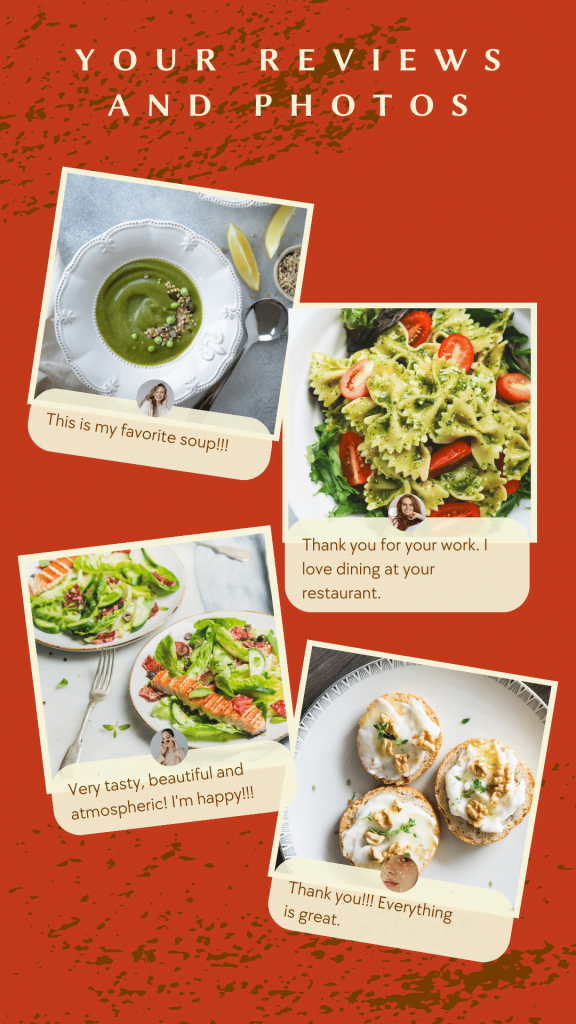
In the digital age of restaurant marketing, online reviews wield significant influence over potential diners’ decisions. The power of a single review, whether positive or negative, can impact your restaurant’s reputation and profitability. In this chapter, we explore the realm of Online Review Aggregators and their crucial role in Restaurant Marketing in Goa.
The Influence of Online Reviews
Online reviews have become the modern-day “word of mouth.” When patrons enjoy a delightful meal at your restaurant, they’re likely to share their experience on platforms like TripAdvisor, Yelp, Google Reviews, and more. Conversely, unsatisfied customers may also voice their grievances online. The influence of online reviews on your restaurant’s image cannot be overstated.
The Numbers Speak
- Studies show that around 93% of consumers read online reviews before deciding to dine at a restaurant.
- A restaurant’s rating on review sites can directly impact its ability to attract customers. Even a one-star difference can lead to a significant change in foot traffic.
Harnessing the Power of Online Review Aggregators
Online Review Aggregators compile reviews from various sources, making it convenient for potential customers to gauge the reputation of your restaurant at a glance. Here’s how to make the most of these platforms:
1. Claim Your Listings
Ensure your restaurant is listed on popular review aggregator websites. Claim your listings to have control over the information displayed and to engage with reviewers.
2. Respond to Reviews
Both positive and negative reviews deserve a response. Express gratitude for positive feedback and address negative comments professionally and empathetically. This shows prospective diners that you value customer input.
3. Encourage Reviews
Engage with your customers and encourage them to leave reviews. Many satisfied patrons are willing to share their experiences when asked politely.
4. Monitor Your Reputation
Regularly monitor your restaurant’s online reputation. Be aware of what customers are saying about your establishment, and use this feedback to make improvements.
Managing and Responding to Reviews
Managing your restaurant’s online reputation requires a proactive approach:
Respond Promptly
Reply to reviews promptly, preferably within 24-48 hours. Timely responses demonstrate your commitment to customer satisfaction.
Be Professional
Maintain a professional tone when responding to reviews, whether they are positive or negative. Avoid becoming defensive or confrontational.
Use Feedback Constructively
Use the insights gained from reviews to identify areas for improvement in your restaurant. Are customers consistently praising your service but criticizing your wait times? Use this feedback to streamline your operations.
Showcase Positive Feedback
Leverage positive reviews by showcasing them on your restaurant’s website and social media profiles. Testimonials from satisfied customers can influence others to dine at your establishment.
Tool 6: Social Media Scheduling Tool
In the fast-paced world of restaurant marketing, maintaining an active and engaging social media presence is essential for success. With diners frequently turning to platforms like Facebook, Instagram, Twitter, and Youtube for inspiration and recommendations, harnessing the potential of social media can significantly impact your restaurant’s visibility and customer engagement.
The Role of Social Media in Restaurant Marketing
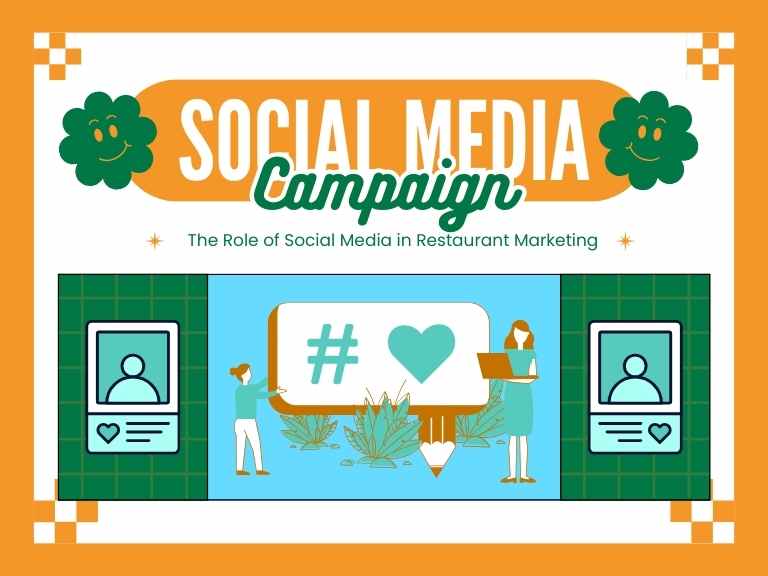
Social media platforms have evolved into powerful tools for promoting restaurants in Goa and beyond. Here’s why they are indispensable:
1. Reach and Visibility
Social media enables you to reach a vast audience instantly. Through strategic posting and advertising, you can extend your restaurant’s reach far beyond your physical location.
2. Customer Engagement
Interacting with customers in real-time fosters a sense of community and loyalty. Responding to comments, messages, and mentions humanizes your brand and encourages diners to visit repeatedly.
3. Visual Storytelling
Restaurants are inherently visual businesses. Showcase your culinary creations, ambiance, and special events through captivating photos and videos. Visual content can inspire cravings and drive foot traffic.
4. Influencer Partnerships
Collaborating with local influencers can amplify your restaurant’s presence. Influencers can create engaging content and share their dining experiences, often reaching a dedicated and relevant audience.
Simplifying Social Media Management
Managing multiple social media accounts can be time-consuming. This is where social media scheduling tools come into play:
Benefits of Social Media Scheduling Tools
- Consistency: Schedule posts in advance to maintain a regular posting schedule, even during busy times.
- Time Efficiency: Save time by planning content for weeks or months ahead.
- Analytics: Most scheduling tools offer insights into post performance, helping you refine your content strategy.
- Multi-Platform Posting: Manage accounts on various platforms from a single dashboard.
Creating a Content Calendar for Success
A content calendar is your roadmap for social media success. It ensures a well-balanced mix of content types, including:
- Promotions: Highlight daily specials, discounts, and promotions.
- Visual Content: Share high-quality images and videos of your dishes.
- Behind-the-Scenes: Show the inner workings of your kitchen and introduce your staff.
- User-Generated Content: Repost content created by satisfied customers.
- Interactive Content: Polls, quizzes, and questions to engage with your audience.
- Events and Updates: Share news about events, menu changes, or holiday hours.
Success Stories: Restaurants Conquering Social Media
Let’s explore how some restaurants in Goa have conquered social media and reaped the benefits. From showcasing stunning seafood platters against picturesque beach backdrops to hosting live cooking demonstrations, these establishments have harnessed the power of social media to attract patrons and create memorable dining experiences.
In conclusion, social media is a dynamic and influential tool in the arsenal of restaurant marketing. With the right strategies and social media scheduling tools, you can establish a strong online presence, engage with your audience, and ultimately drive customers to your restaurant in the vibrant culinary landscape of Goa.
Tool 7: WiFi Marketing Tool
In the dynamic realm of restaurant marketing, staying connected with your customers both online and offline is crucial for building lasting relationships and ensuring repeat business. This is where WiFi marketing tools come into play, transforming your restaurant’s free WiFi service into a potent marketing asset.
Transforming Free WiFi into Marketing Opportunities
Offering free WiFi has become a standard practice in restaurants, but smart operators leverage this service to gather data, engage customers, and drive business growth. Here’s how you can do it:
1. Capturing Customer Data
WiFi marketing tools allow you to collect valuable customer data effortlessly. When diners log in to your WiFi network, you can gather information like email addresses, phone numbers, and social media profiles. This data forms the foundation of your marketing campaigns and customer engagement strategies.
2. Personalized Marketing
Armed with customer data, you can tailor marketing messages to individual preferences. Send personalized promotions, birthday discounts, or special offers based on past dining habits. This level of personalization enhances the customer experience and fosters loyalty.
3. Building Customer Profiles through WiFi
WiFi marketing tools help you create detailed customer profiles. These profiles include dining habits, visit frequency, preferred dishes, and more. Such insights allow you to refine your menu, optimize pricing, and strategize marketing efforts effectively.
4. Social Media Integration
Encourage customers to check in on social media platforms in exchange for access to your WiFi. This not only expands your restaurant’s online reach but also generates user-generated content, such as photos and reviews, which can attract new customers.
Implementing WiFi Marketing Effectively
While WiFi marketing offers immense potential, it must be implemented thoughtfully to be effective. Here’s how you can do it right:
1. Seamless Login Experience
Make the WiFi login process as frictionless as possible. Use a captive portal that allows customers to log in with a single click using their social media accounts or email. Avoid complex forms or lengthy procedures.
2. Clear Data Privacy Policies
Be transparent about the data you collect and how you use it. Assure customers that their information is secure and will not be misused. Compliance with data protection regulations is essential.
3. Valuable Content
Consider offering valuable content in exchange for WiFi access. This could be a digital menu, exclusive discounts, or access to your restaurant’s app. Ensure that customers perceive the value in sharing their information.
4. Analytics and Optimization
Regularly analyze the data collected through your WiFi marketing tool. Use insights to refine your marketing strategies, menu offerings, and customer engagement initiatives. Continuously optimize your campaigns for better results.
Success Stories: Restaurants Capitalizing on WiFi Marketing
Discover how restaurants in Goa have harnessed the potential of WiFi marketing to enhance customer experiences and boost their bottom lines. From offering exclusive WiFi-only promotions to creating engaging social media contests, these establishments have successfully leveraged WiFi as a marketing tool.
In conclusion, WiFi marketing tools provide restaurants with a powerful means to connect with customers, gather valuable data, and create personalized experiences. When implemented effectively, WiFi marketing can help your restaurant thrive in the competitive landscape of Goa’s culinary scene.
Tool 8: Restaurant Guest Survey
In the ever-evolving landscape of restaurant marketing, understanding your customers’ needs, preferences, and feedback is paramount to success. This is where restaurant guest surveys come into play as a powerful tool to gather valuable insights, enhance the dining experience, and drive improvements in your restaurant business.
Gathering Valuable Customer Feedback
Restaurant guest surveys offer a direct line of communication between your establishment and your customers. By asking the right questions, you can gain a deeper understanding of their experiences, expectations, and areas where you can excel.
Designing Effective Restaurant Guest Surveys
Creating a well-structured and effective guest survey is an art in itself. Here are some key considerations:
1. Define Clear Objectives
Begin by defining the objectives of your survey. What specific aspects of the restaurant experience do you want to gather feedback on? It could be food quality, service speed, ambiance, or anything else that matters to your patrons.
2. Keep it Short and Focused
In today’s fast-paced world, customers value their time. Keep your survey concise and to the point. Avoid overwhelming them with lengthy questionnaires. Focus on collecting essential information.
3. Use a Mix of Question Types
To capture diverse feedback, use a mix of question types. This can include multiple-choice questions, rating scales, open-ended questions, and net promoter score (NPS) inquiries. Each type serves a specific purpose in gathering feedback.
4. Choose the Right Timing
Timing is crucial when administering guest surveys. Ideally, send them shortly after the dining experience while it’s still fresh in the customer’s mind. Many restaurants choose to use digital survey tools that can be emailed or texted to customers post-meal.
Analyzing Survey Data for Improvement
Collecting survey responses is only the beginning. To derive actionable insights, you must analyze the data effectively:
1. Identify Patterns and Trends
Look for patterns and trends in customer feedback. Are there recurring comments or complaints? Identifying these can help you pinpoint areas that need improvement.
2. Prioritize Feedback
Not all feedback will carry the same weight. Prioritize issues that have a significant impact on customer satisfaction and overall restaurant success. Focus your resources on addressing these first.
3. Implement Changes
Based on survey findings, develop action plans for improvement. This could involve staff training, menu adjustments, or changes in the restaurant’s ambiance. Effective implementation of changes is key to enhancing the overall dining experience.
4. Measure the Impact
Continuously monitor the impact of the changes you’ve made by gathering feedback through subsequent surveys. This allows you to gauge customer satisfaction and track improvements over time.
Success Stories: Restaurants Enhancing Guest Experiences
Explore real-world examples of restaurants in Goa that have leveraged guest surveys to elevate their offerings. From fine-tuning their menus to revamping service protocols, these establishments have made data-driven decisions that have resulted in delighted customers and improved bottom lines.
In conclusion, restaurant guest surveys are an invaluable tool for gathering insights, enhancing customer experiences, and making data-driven improvements. By designing effective surveys and analyzing feedback systematically, your restaurant in Goa can stay ahead in the competitive culinary landscape and ensure long-term success.
